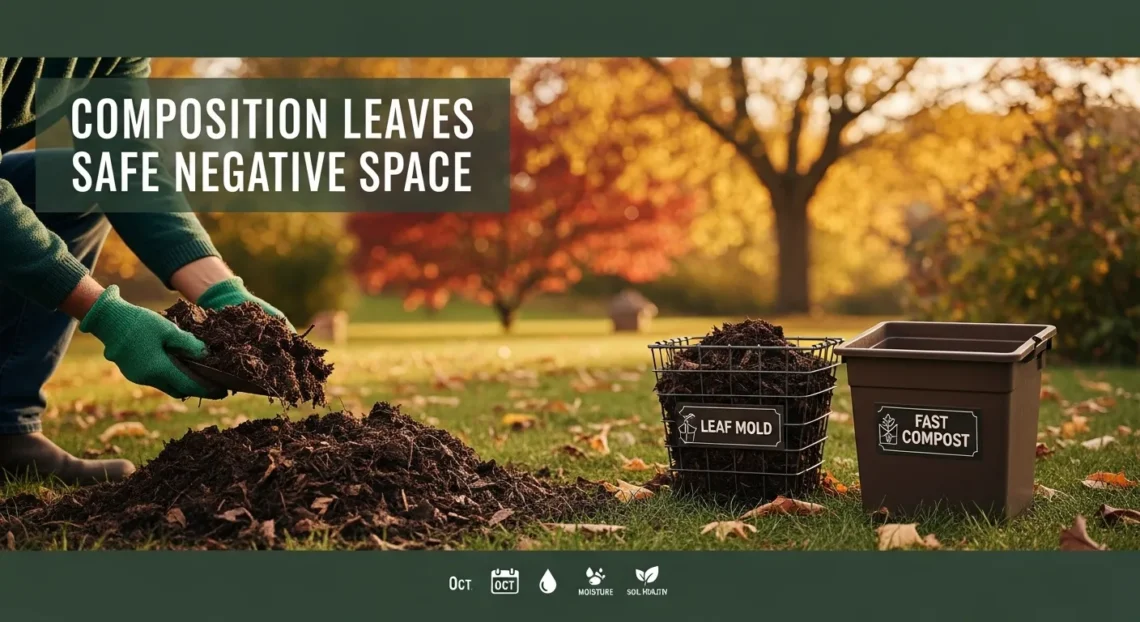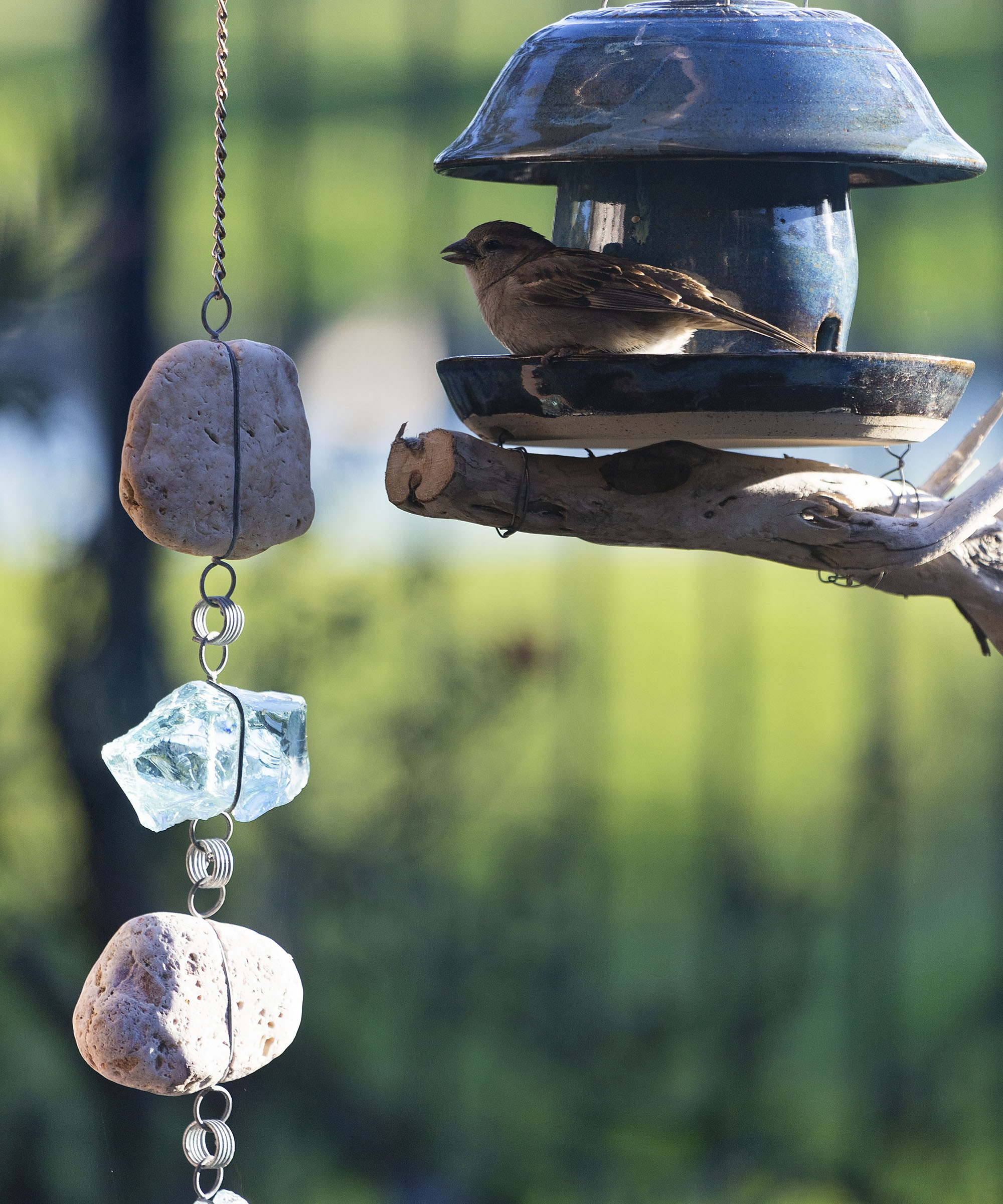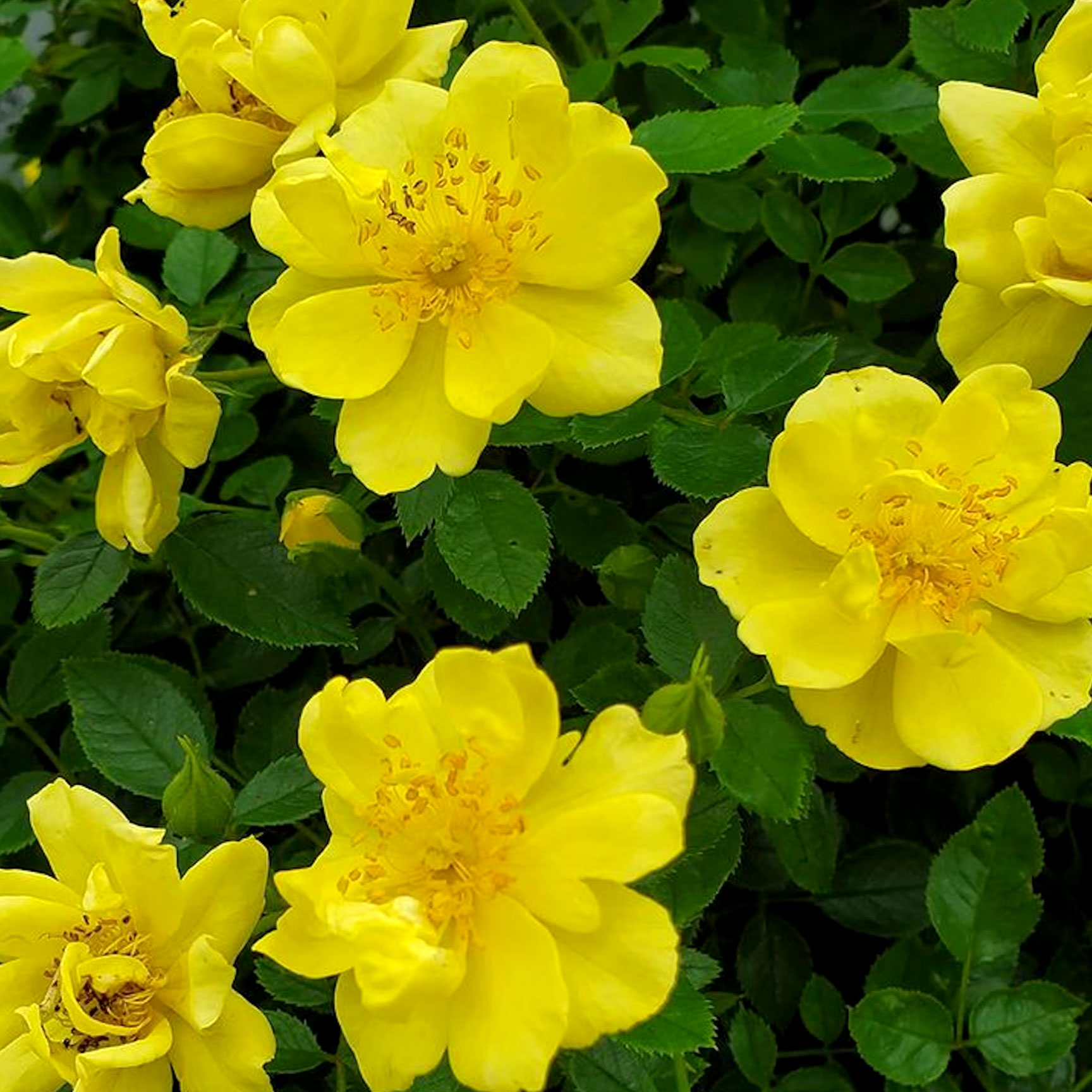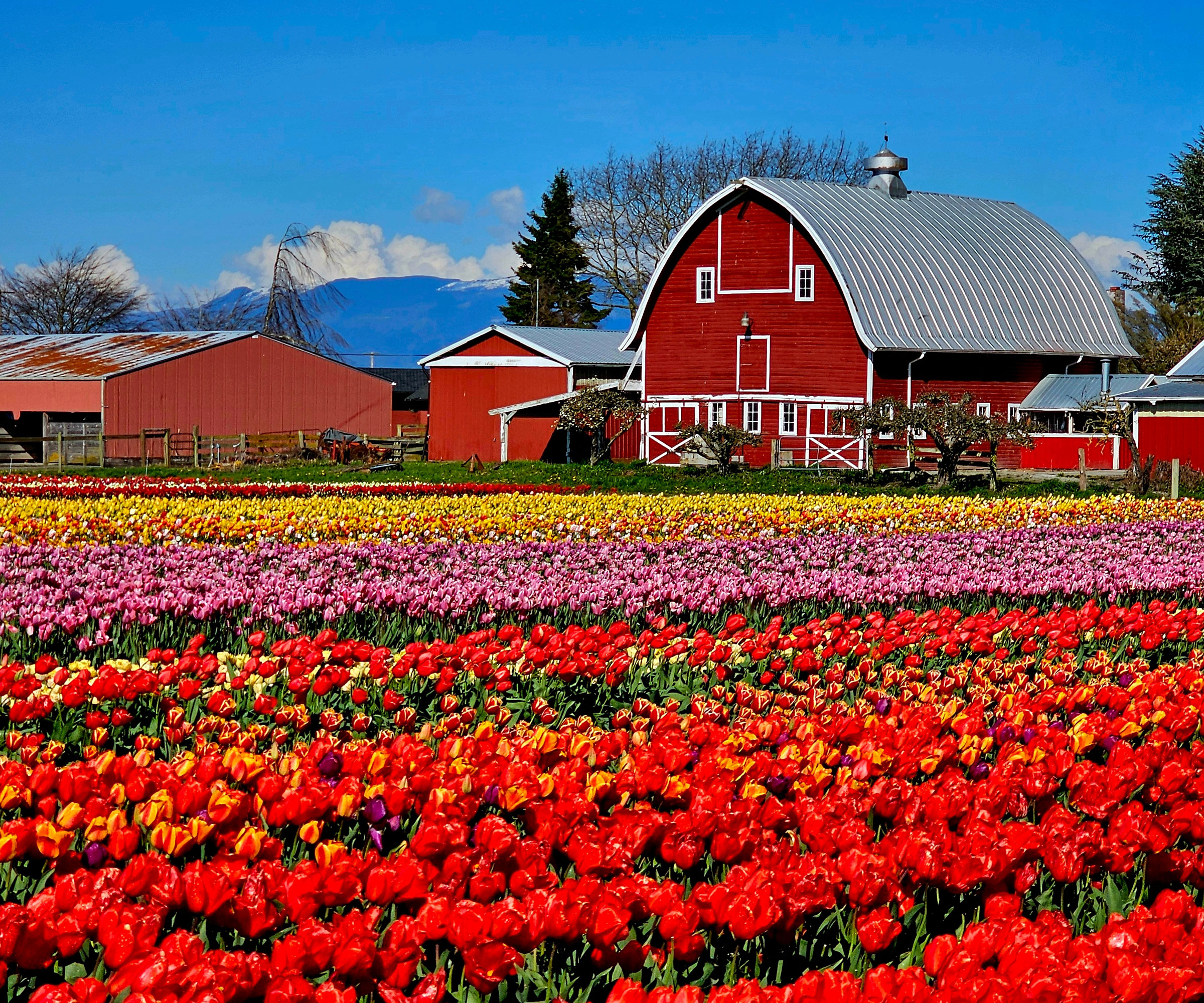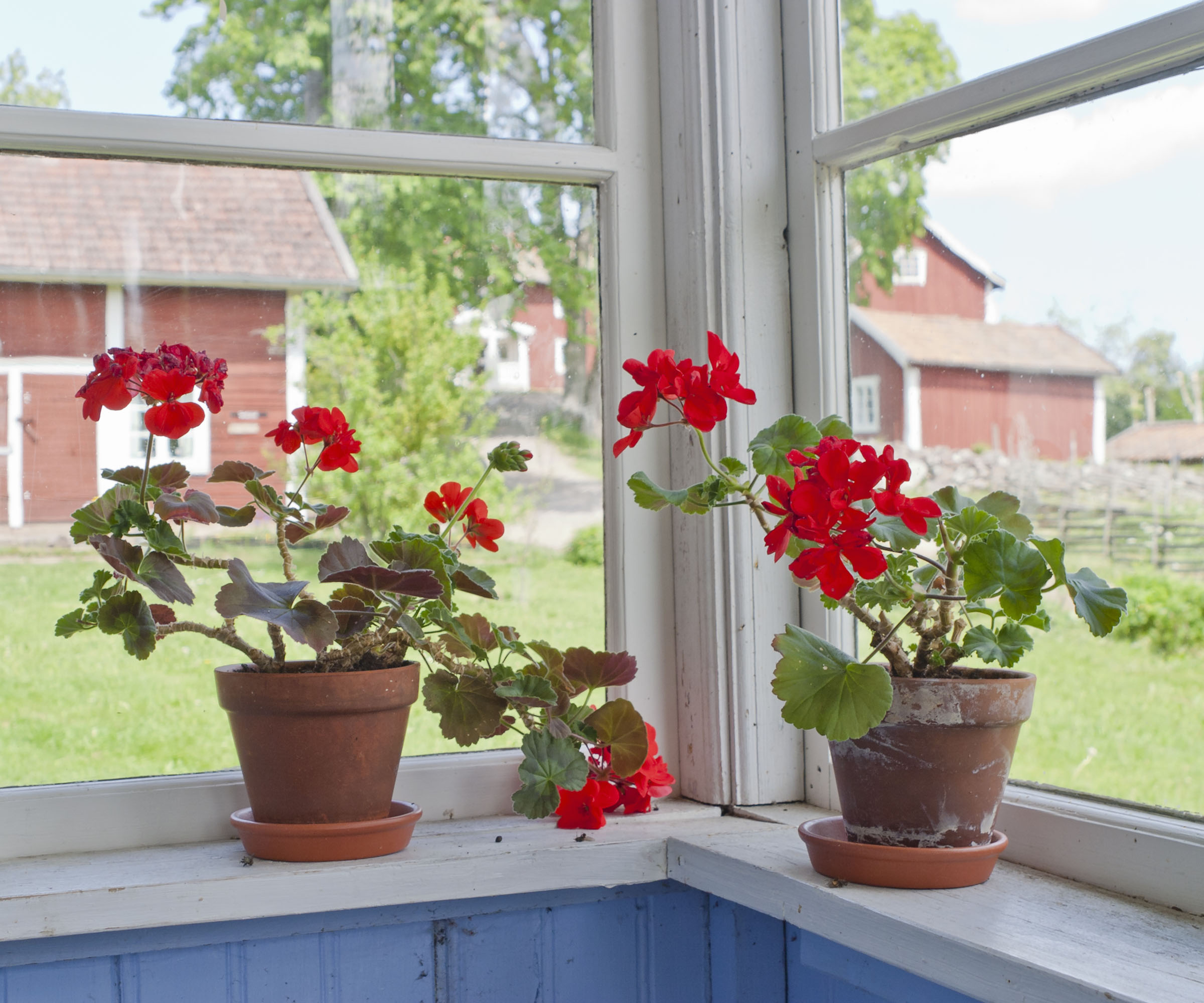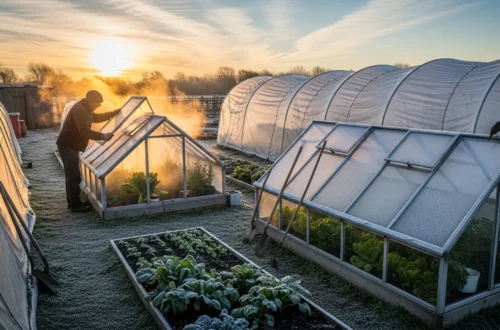Table of Contents
Table of Contents
Introduction: October’s Golden Opportunity
October transforms gardens into a canvas of amber, gold, and crimson. For many, fallen leaves are a nuisance — something to rake, bag, and discard. However, for gardeners, these leaves are a valuable resource that can be turned into leaf mold compost or quick compost. Both methods recycle autumn’s abundance into soil-boosting gold.
This guide will walk you through the step-by-step process of collecting, preparing, and transforming leaves into valuable organic matter. Whether you want the slow, fungal richness of leaf mold or the quick, nutrient-packed boost of hot compost, October is the perfect time to start.
Many gardeners underestimate just how transformative leaf mold compost can be. Unlike synthetic fertilizers that provide a quick but shallow fix, leaf mold compost works at the structural level of your soil, improving its ability to hold water and nutrients for years. This is why seasoned gardeners often call it “black gold.” The twist? While it takes patience, the payoff is so dramatic that once you’ve used it, you’ll never look at fallen leaves the same way again.
🍂 Why October Is the Perfect Time
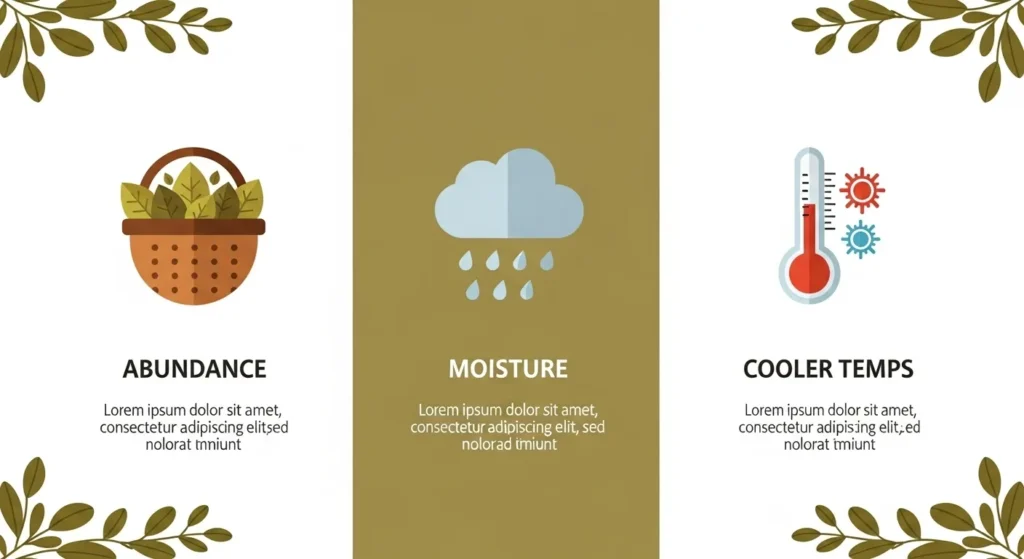
October is peak season for leaf fall in most temperate regions. This timing matters because:
- Abundance of raw material: Trees shed leaves en masse, giving you a free, renewable supply.
- Moisture levels: Autumn rains keep piles damp, which accelerates the decomposition process.
- Cooler temperatures: Prevent piles from drying out too quickly.
- Seasonal prep: Starting now means your leaf mold compost or fast compost will be ready for spring planting.
By acting in October, you’re aligning with nature’s cycle — capturing organic matter at its freshest and setting up your garden for success.
Another hidden advantage of starting your leaf mold compost in October is the microbial timing. Soil fungi and bacteria are still active before winter fully sets in, meaning your pile gets a head start. By spring, you’ll notice the leaves already softening and darkening, proof that decomposition is underway. This early momentum can shave months off the process, giving you usable material sooner than if you waited until late winter.
Step 1: Collect & Sort Your Leaves
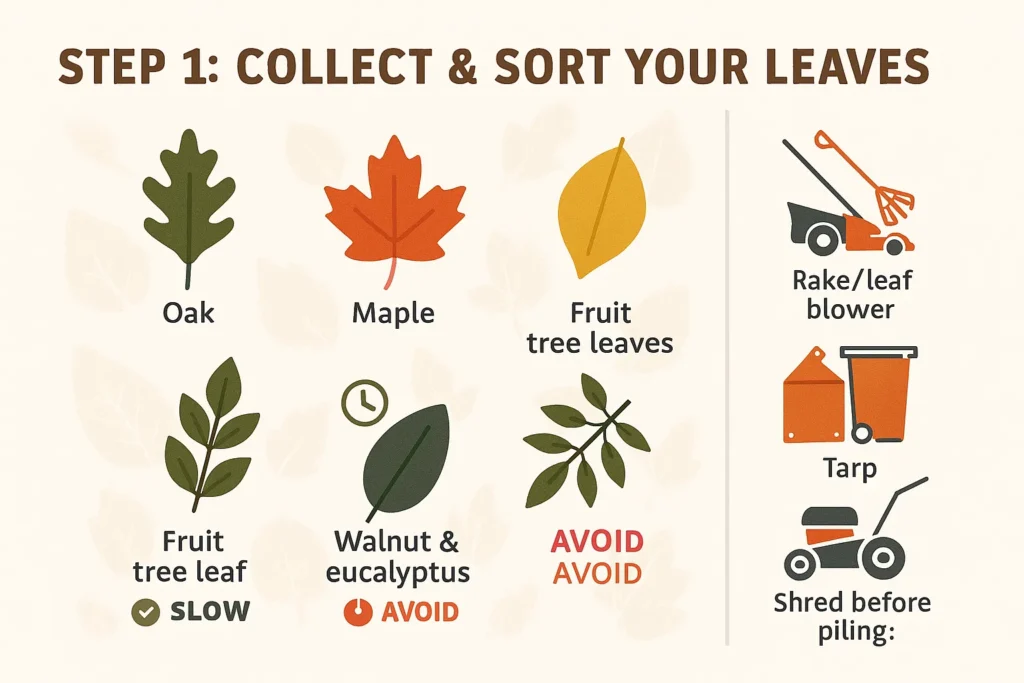
Which Leaves Work Best
Not all leaves are created equal when it comes to composting.
- Best for composting: Oak, maple, birch, apple, cherry, and other fruit trees. These break down steadily and enrich the soil.
- Neutral but slow: Pine needles and magnolia leaves. They decompose slowly but can be mixed in moderation.
- Avoid or limit: Walnut (contains juglone, toxic to plants), eucalyptus (antifungal oils), and diseased leaves (risk of spreading pathogens).
Tools You’ll Need
- Rake or leaf blower for collection.
- Tarp for easy transport.
- A shredder or lawn mower to chop leaves into smaller pieces (shredded leaves decompose 3–4 times faster).
Here’s a twist most beginners miss: mixing different types of leaves creates a more balanced leaf mold compost. For example, oak leaves are high in lignin and break down slowly, while softer maple leaves decompose quickly. Combining them creates a steady, layered breakdown that produces a richer end product. Think of it like blending ingredients in a recipe — variety leads to complexity, and complexity leads to healthier soil.
🔄 Step 2: Decide — Leaf Mold or Fast Compost
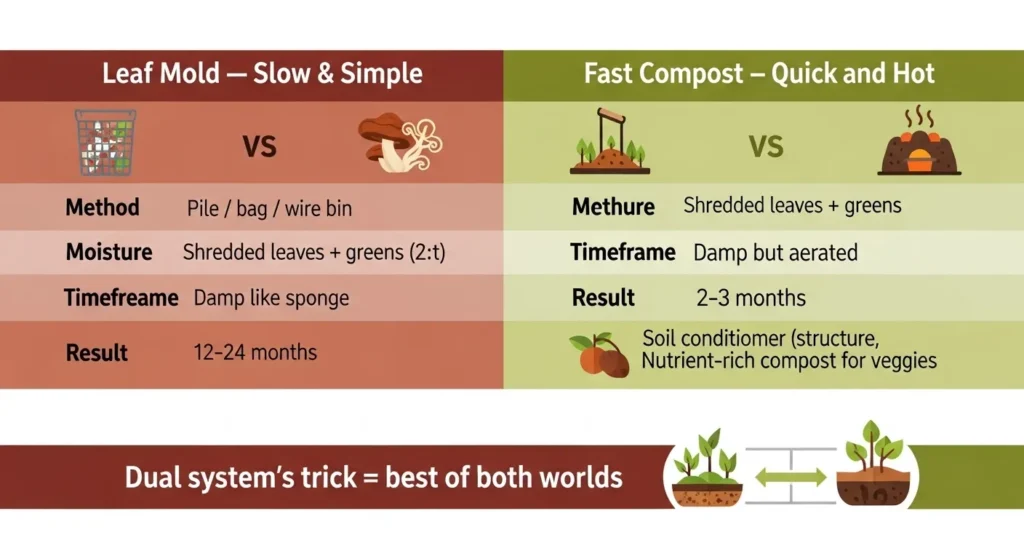
Leaf Mold (Slow & Simple)
Leaf mold is created when leaves decompose primarily through fungal activity rather than bacterial activity. It’s not nutrient-rich like compost, but it’s an excellent soil conditioner that improves structure, aeration, and water retention.
- Method: Pile leaves in a corner, or place them in a wire bin or black plastic bag with holes.
- Moisture: Keep damp, like a wrung-out sponge.
- Timeframe: 12–24 months.
- Result: Dark, crumbly, earthy-smelling material that resembles forest soil.
Fast Compost (Quick & Hot)
Fast composting relies on bacterial decomposition and requires balancing carbon-rich “browns” (leaves) with nitrogen-rich “greens” (grass clippings, kitchen scraps) — a method also useful in keyhole gardening with in-ground composters.
- Method: Shred leaves, mix with greens in a 2:1 ratio.
- Turning: Aerate weekly to maintain heat.
- Moisture: Keep damp but not soggy.
- Timeframe: 2–3 months.
- Result: Nutrient-rich compost ready for vegetable beds and lawns.
If you’re torn between the two methods, here’s a gardener’s trick: run a dual system — one for leaf mold compost and another for fast composting.
. Dedicate one bin to leaf mold compost and another to fast composting leaves. This way, you’ll have a quick supply of nutrient-rich compost for your vegetables while your leaf mold matures slowly in the background. The twist is that these two systems complement each other beautifully — one feeds your plants quickly, the other builds long-term soil health.
💧 Step 3: Maintain Moisture & Airflow
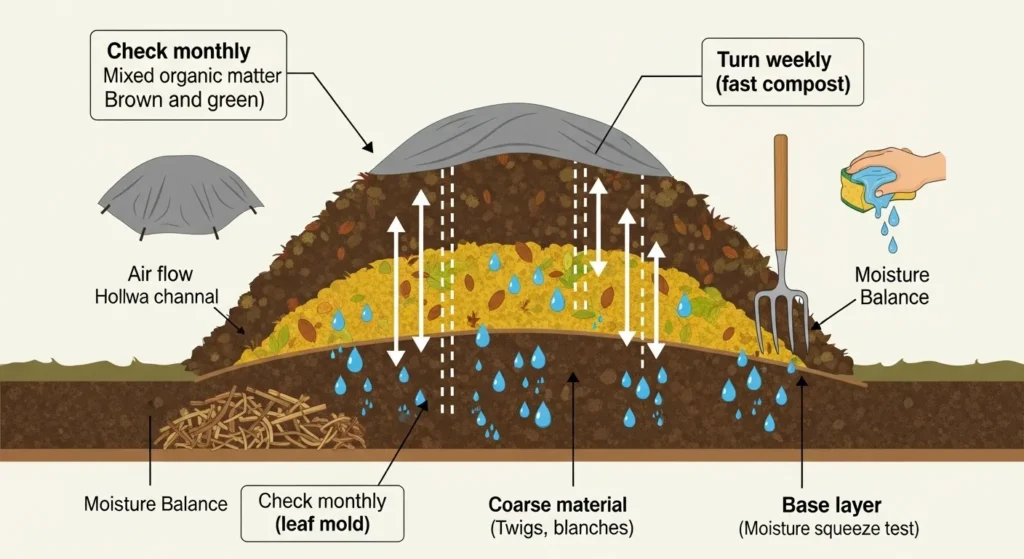
Both methods require the right balance of oxygen and water:
- Leaf mold piles: Minimal maintenance. Just check the moisture monthly.
- Fast compost piles: Turn weekly to introduce oxygen and prevent anaerobic conditions.
- Covering: Use a tarp or breathable compost cover to retain moisture and heat.
- Moisture test: Grab a handful — it should feel like a wrung-out sponge. Too dry? Add water. Too wet? Add shredded leaves.
Experienced gardeners often say that leaf mold compost is more forgiving than fast compost because fungi thrive in slightly damper, less-aerated conditions. Still, don’t let your pile dry out completely — fungi need moisture to colonize the leaves. If you want to speed things up, poke a few vertical holes into the pile with a garden fork. This simple twist increases airflow without the need for constant turning, giving you a healthier, more active decomposition process.
🌱 Step 4: Harvest & Use
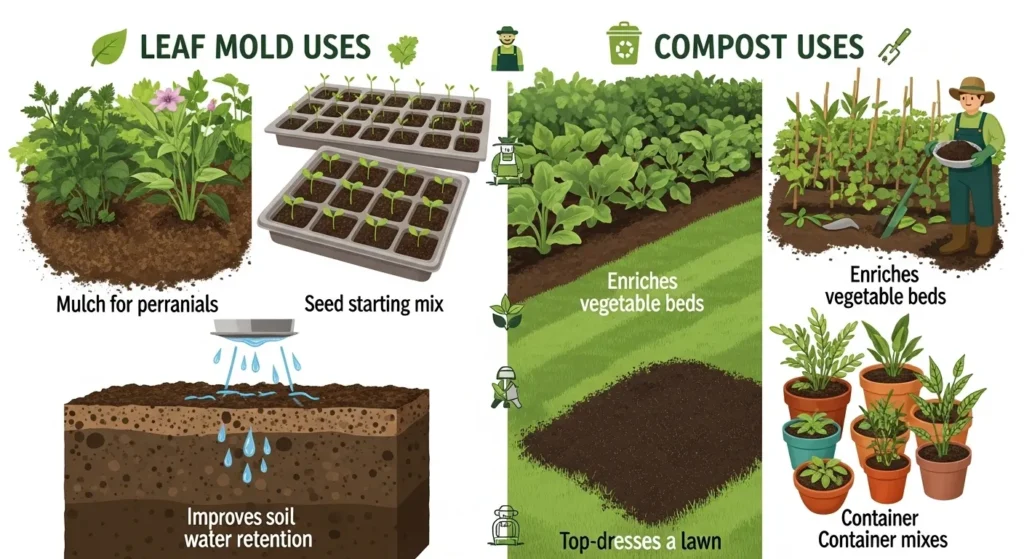
Leaf Mold Uses
- Mulch: Spread around perennials to conserve moisture and suppress weeds.
- Soil conditioner: Mix into beds to improve structure and water retention.
- Seed-starting mix: Blend with compost and sand for a light, airy medium.
Compost Uses
- Vegetable beds: Boost fertility before planting.
- Top-dressing lawns: Spread thinly to improve soil health.
- Container gardening: Mix into potting soil for added nutrients.
One of the most satisfying moments in gardening is scooping up finished leaf mold compost — dark, crumbly, and smelling like a forest floor. Don’t rush this stage; the longer it matures, the finer the texture becomes. A twist many gardeners enjoy is using partially finished leaf mold as a mulch. Even before it’s fully broken down, it suppresses weeds and slowly enriches the soil beneath, giving you a two-in-one benefit.
🍁 Pro Tips for Faster Results
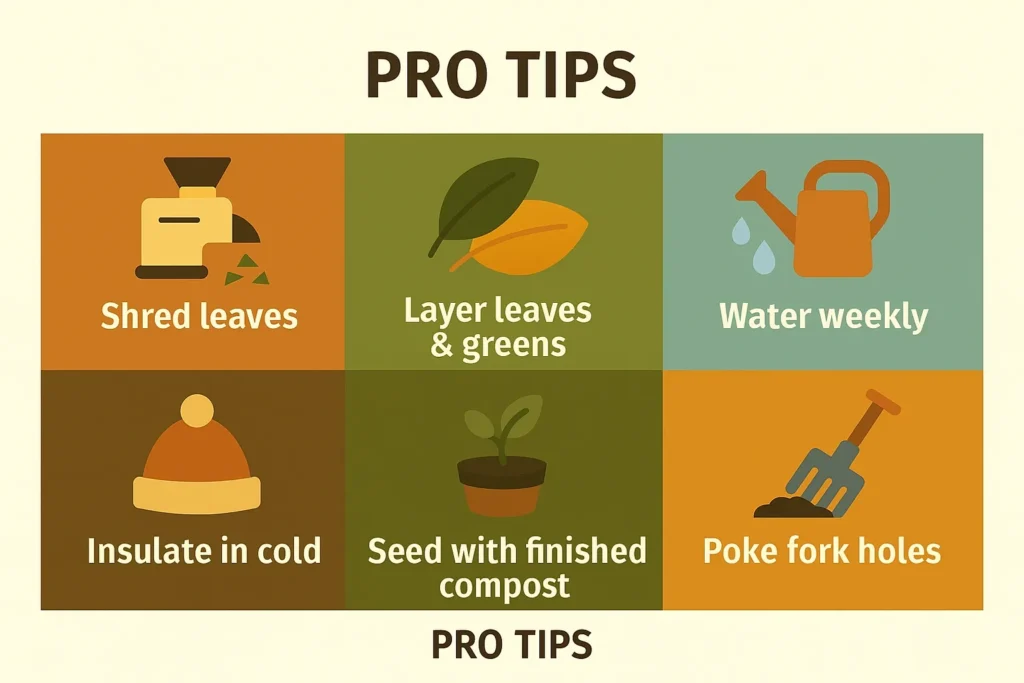
- Shred leaves: Smaller pieces = faster breakdown.
- Layering: Alternate leaves with grass clippings or kitchen scraps.
- Moisture management: Dry climates may need weekly watering.
- Insulation: In colder regions, insulate piles with straw or cardboard to keep microbial activity going.
Another overlooked trick is to “seed” your pile with a handful of finished compost or garden soil. This introduces a ready-made community of microbes and fungi that jumpstart the breakdown of leaves, especially in leaf mold compost piles. Think of it as adding a sourdough starter to bread dough — you’re inoculating the pile with life. This twist can cut months off the waiting time and ensure a more consistent end product.
🌳 Environmental Benefits of Leaf Mold Compost
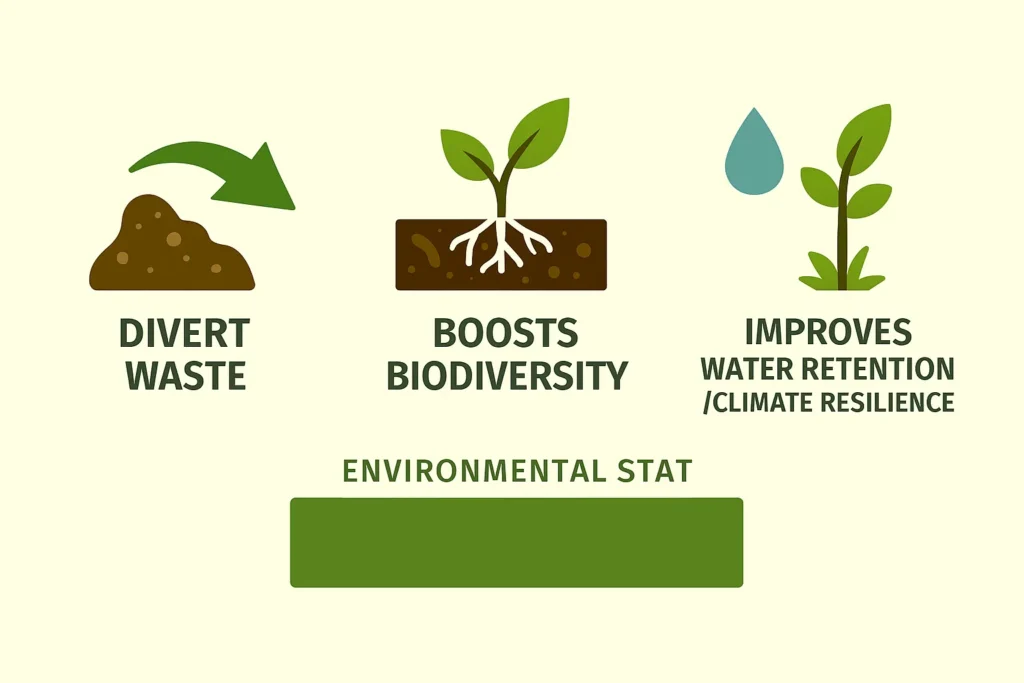
Using leaves in your garden instead of sending them to the landfill has broader ecological benefits:
- Reduces waste: Diverts organic matter from municipal disposal.
- Cuts emissions: Prevents methane release from decomposing leaves in landfills.
- Supports biodiversity: Leaf mold mimics forest soil, encouraging beneficial fungi and microbes.
- Saves money: Free alternative to store-bought soil conditioners and compost.
Beyond the garden, leaf mold compost and soil organic matter play a role in climate resilience and soil health. Improving the soil’s ability to hold water helps gardens withstand droughts and heavy rains alike. This twist is often overlooked: what seems like a humble pile of rotting leaves is actually a tool for climate adaptation. Every handful of leaf mold you add to your soil is a step toward a more sustainable, resilient garden ecosystem.
🧑🌾 Case Study: My October Leaf Mold Setup
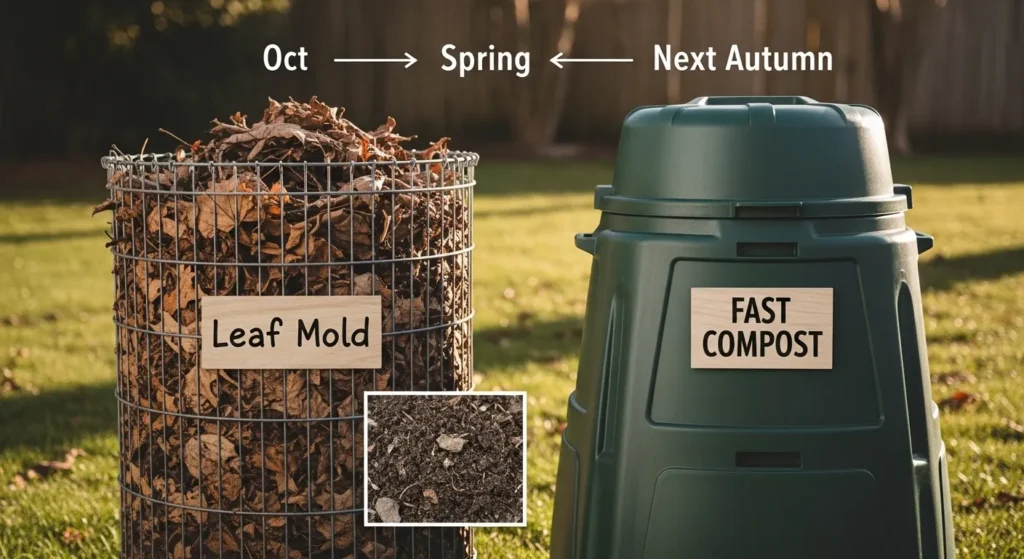
Last October, I set up two bins side by side: one for leaf mold compost and one for fast composting leaves. By spring, the fast compost pile was ready to enrich my vegetable beds, while the leaf mold pile continued to mature. By the following autumn, I had a rich, crumbly soil conditioner perfect for mulching perennials.
What surprised me most was how different the two piles smelled and felt. The leaf mold compost pile had a deep, earthy aroma, almost like walking through a forest after rain. The fast compost pile, on the other hand, was hotter, steamier, and more pungent. This contrast kept me curious and motivated — it was like watching two different ecosystems at work. The twist? Both piles, though so different in process, ended up serving my garden in equally valuable ways.
This dual approach ensures a steady supply of both nutrient-rich compost and structure-improving leaf mold year after year.
✅ Conclusion
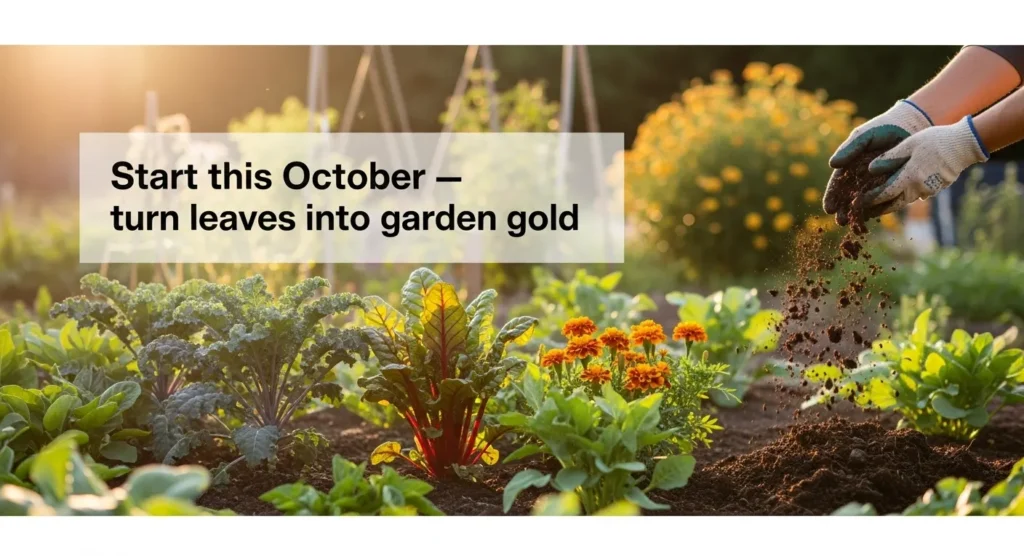
October’s fallen leaves are not waste — they’re a seasonal gift. By choosing between leaf mold compost and fast compost, you can recycle autumn’s abundance into a resource that enriches your soil, supports plant health, and reduces environmental impact.
Instead of bagging leaves for disposal, turn them into garden gold. Start today, and by spring you’ll see the rewards in healthier beds, stronger plants, and richer soil.
The beauty of working with leaf mold compost is that it teaches patience while rewarding consistency. Each autumn, you’re given a fresh supply of raw material, and each year your soil becomes richer, darker, and more alive. Over time, this cycle creates a self-sustaining garden ecosystem where fertility builds naturally, season after season. The twist is that what looks like a simple pile of leaves is actually a long-term investment — one that transforms not just your soil, but the way you think about gardening itself.
❓ Frequently Asked Questions (FAQ)
1. Can I compost pine needles with leaves?
Yes, pine needles can be added to your pile, but they break down more slowly than softer leaves. If you’re making leaf mold compost, mix pine needles with faster-decomposing leaves like maple or birch to balance the process. Over time, the needles add acidity and texture, which can benefit certain plants.
2. How long does leaf mold compost take to be ready?
On average, leaf mold compost takes 12–24 months to fully mature. Shredding leaves, keeping them moist, and storing them in a breathable bin can shorten the process. If you’re in a hurry, you can use partially finished leaf mold as mulch while the rest continues to break down.
3. What’s the difference between leaf mold compost and regular compost?
Leaf mold compost is created mainly by fungi breaking down leaves, resulting in a soil conditioner that improves structure, aeration, and water retention. Regular compost, on the other hand, is produced by bacteria breaking down a mix of “greens” and “browns,” creating a nutrient-rich amendment. Both are valuable, but they serve slightly different purposes in the garden.
4. Can I use diseased leaves in leaf mold compost?
It’s best to avoid adding diseased leaves to your leaf mold compost pile. Fungal spores and pathogens can survive the slow, cool decomposition process. Instead, dispose of diseased material separately or through municipal green waste programs to prevent spreading problems in your garden.
5. How do I speed up the process of making leaf mold compost?
To accelerate decomposition, shred your leaves before piling them, keep the pile consistently moist, and turn it occasionally to introduce oxygen. Adding a handful of finished compost or garden soil can also “inoculate” the pile with beneficial microbes, helping your leaf mold compost mature faster.
6. What are the best uses for leaf mold compost in the garden?
Finished leaf mold compost is excellent as mulch around perennials, a soil conditioner for beds, or as part of a seed-starting mix. Its ability to hold moisture makes it especially useful in dry climates, while its light texture improves heavy clay soils.

